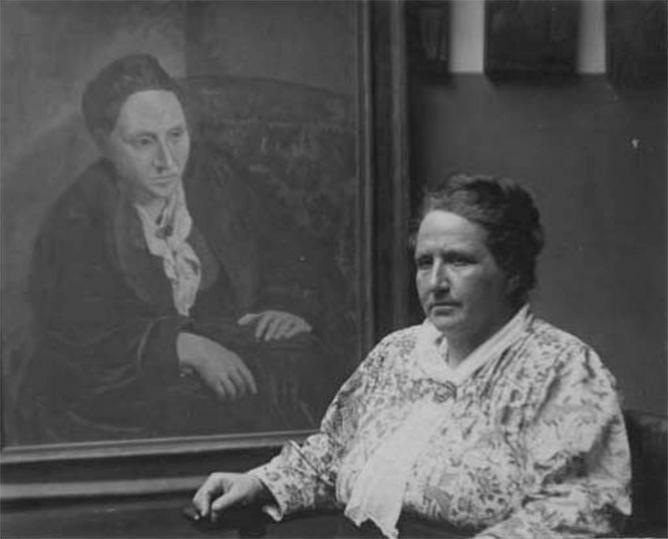Collecting art is both acquisition and connection. Collectors are not mere funders for the creative class but active participants in the construction of artistic value and collaborators in the meaning-making process. While some collectors are avid advocates for their favorite artists, simply purchasing an artist’s work is a vote that people pay attention to this person’s work.
Collecting is a dialogue between the collector, the artist, and the wider community. Looking back at historical precedents, we’ll outline this class of connections.
Connecting with Artists
Collecting art establishes a profound connection between collectors and artists. While this connection can stop at the point of transaction, it can also evolve into a meaningful dialogue.
In the early 20th century, writer Gertrude Stein became a champion for the then-unknown artists Pablo Picasso and Henri Matisse. Stein not only purchased their work but also hosted them in her Parisian salon, introducing them to influential figures in the art world. This crucial support helped launch their careers and solidify their place in modern art history.
Similarly, American sculptor Alexander Calder and his collector Peggy Guggenheim developed a close friendship. Guggenheim championed Calder’s mobiles and actively encouraged his artistic exploration through commissions, inspiring him to create new and innovative forms.

Wealthy among his fellow Impressionists, Gustave Caillebotte supported his friends, like Monet and Renoir, by purchasing their minor works. In his will, he donated his collection of 68 works to the French government, requesting they be displayed first in the Luxembourg Palace and then the Louvre. Initially refusing, Renoir (Caillebotte’s executor) finally won them over, and those “minor works” are now among the most recognizable images in art history.

Beyond aesthetic appreciation, collectors can actively contribute to the artist’s legacy, making the enterprise a collaborative venture, a partnership that nurtures the cultural and historical continuity of art.
Connecting with Collectors
Collecting art can foster a vibrant community where collectors share, inspire, and challenge each other. This communal aspect is not merely about acquiring art but about sharing the journey of discovery and appreciation with peers.
The Mellon brothers, Andrew and Richard, were prominent American art collectors who built impressive individual collections. Their shared passion for art undoubtedly influenced the acquisitions at their respective institutions, the National Gallery of Art and the Yale University Art Gallery, ultimately enriching both collections.
Connections between collectors, curators, and gallerists can lead to friendships, collaborations, and a collective patronage that shapes the art market and influences history.
Agnes Gund‘s influence on art history goes beyond collecting. She championed underrepresented artists, particularly women and minorities — such as Judy Chicago and Kara Walker — pushing for their rightful recognition, with many institutions catching up to her intuition and taste years, sometimes decades later.

The relationship between collectors is integral to the art ecosystem, creating a network of support, inspiration, and shared passion that benefits all members and the art world at large.
Connecting with Friends & Family
Owning art is a conversation with life itself. Like the tracks on a carefully curated mixtape (or Spotify playlist), the force of one’s thoughtfully arranged taste creates a statement about the curator. When done honestly, even earnestly, one’s taste becomes an outward reflection of one’s inner life in much the same way as if they’d made the art themselves.
Collectors often find themselves weaving their own narratives into the art. Whether it’s the story behind an acquisition, the personal significance of a work, the story of their connection with the artist or the artist’s community, or simply the joy it brings, these narratives are more revealing of the collector than any single artist represented in their collection.
And just like that mixtape, it affords one’s friends and family an intimacy all its own: Look! This is what moves me. What a joy worth sharing.
For updates on all of our upcoming editorial features and artist interviews, subscribe to our newsletter below.


